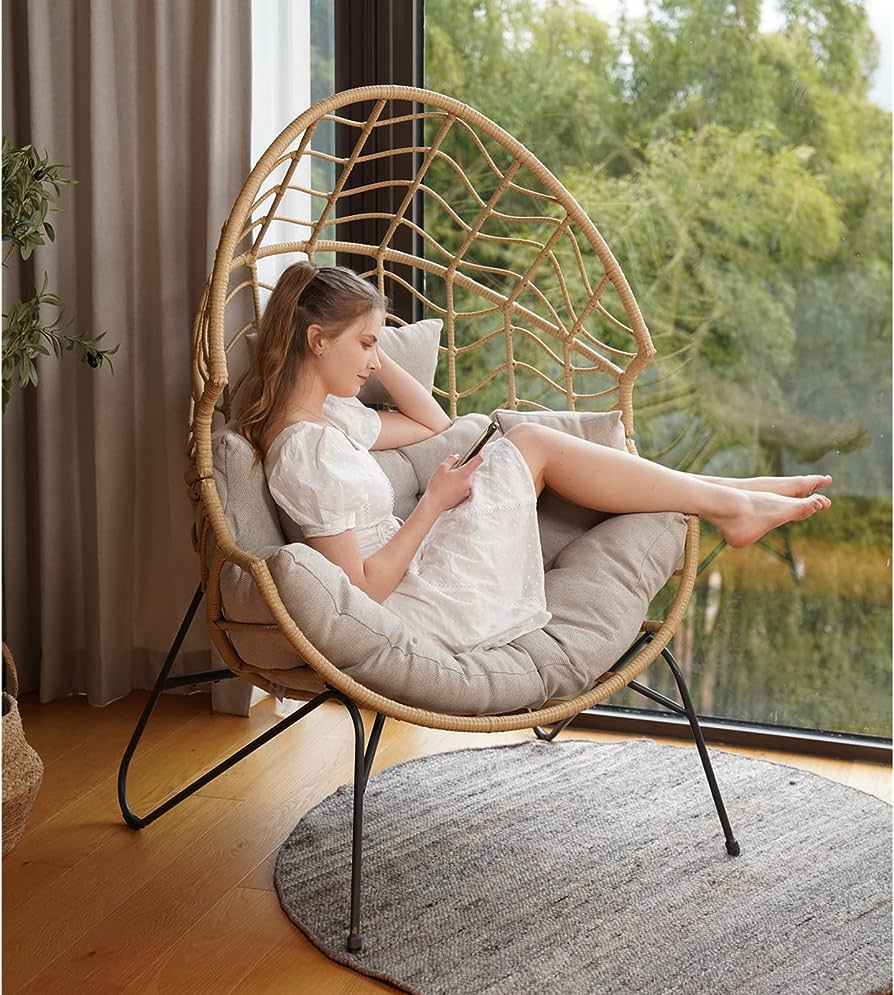The Evolution of Materials in Egg Chair Design
When examining the materials used in the construction of the Egg Chair, it becomes evident that innovation and adaptability have played significant roles. The original design by Arne Jacobsen featured a molded fiberglass inner frame, which was revolutionary for its time. This material not only provided strength and stability but also allowed for the creation of the chair’s distinctive curved shape. Fiberglass was a lightweight and durable choice, making it ideal for the chair’s structure.
Over time, however, the materials used in Egg Chair construction have evolved. As fiberglass became less popular due to environmental concerns, alternative materials such as wood and metal have gained prominence. Wooden variations of the Egg Chair often utilize plywood or solid wood for the frame, offering a natural and warm aesthetic. Metal versions, typically made from steel or aluminum, provide a sleek and contemporary look.
Upholstery and Comfort Considerations
In addition to the choice of materials for the chair’s frame, the upholstery plays a crucial role in the comfort and overall aesthetic appeal of the Egg Chair. High-quality foam padding is utilized to provide ample cushioning and support. The upholstery options for the Egg Chair are diverse, ranging from luxurious leather to various fabrics, allowing for customization to suit different design preferences and interior styles. Leather upholstery, known for its durability and sophistication, adds a touch of elegance to the chair, while fabric options offer a broader range of colors and patterns.
The combination of carefully selected materials and thoughtful upholstery choices ensures that the Egg Chair provides not only visual appeal but also exceptional comfort for those who indulge in its embrace.
Construction Techniques and Craftsmanship
Craftsmanship is paramount in the construction of the Egg Chair, ensuring that each piece is expertly crafted to meet the highest standards of quality. The process of creating an Egg Chair requires skilled artisans who possess a deep understanding of the design’s complexity and intricacy.
In the initial stages, the chosen materials for the chair’s frame are skillfully molded or shaped to bring the desired form to life. This process requires precision and attention to detail to ensure that the curves and angles are executed flawlessly.
Once the frame is complete, the upholstery is meticulously applied. Skilled craftsmen carefully cut and stitch the chosen fabric or leather to cover the chair’s frame, paying attention to every seam and corner. The result is a visually seamless and impeccably finished product.
Durability and Longevity
The materials and construction techniques employed in the Egg Chair’s design contribute to its durability and longevity. The use of high-quality materials, such as fiberglass, wood, or metal, ensures that the chair can withstand regular use while maintaining its structural integrity. The craftsmanship involved in the construction process ensures that each Egg Chair is built to last and withstand the test of time.
The upholstery materials chosen, whether leather or fabric, are selected for their durability and resistance to wear and tear. Proper care and maintenance of the Egg Chair, such as regular cleaning and conditioning, can further extend its lifespan and preserve its appearance.
In conclusion, the Egg Chair’s materials and construction techniques are carefully chosen and executed to create a durable, comfortable, and visually stunning piece of furniture. The evolution of materials, the consideration of upholstery options, the craftsmanship involved in construction, and the focus on longevity all contribute to the enduring popularity and iconic status of the Egg Chair. Whether it is the original fiberglass design or the variations using wood or metal, the Egg Chair remains a symbol of exquisite craftsmanship and timeless design.
